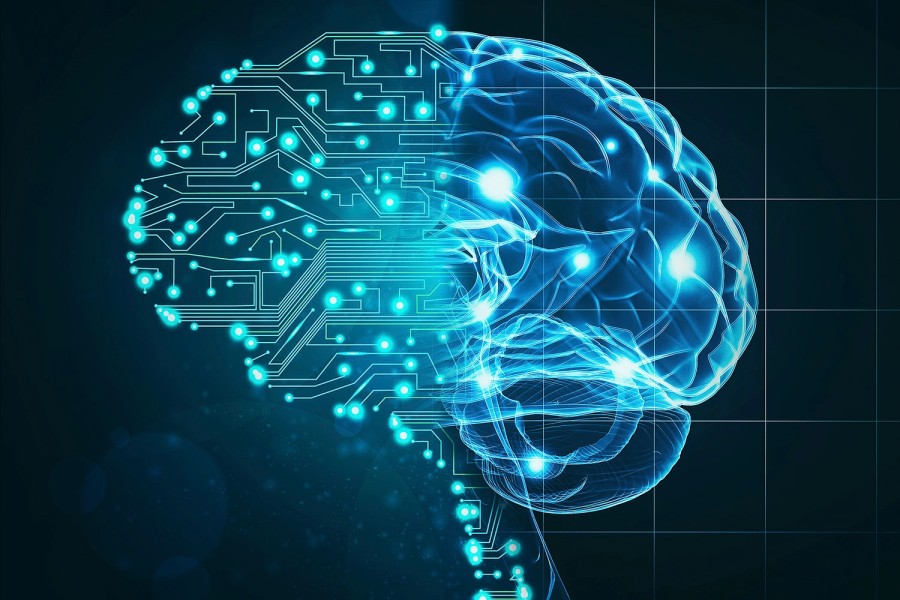Memristor To Power Up Artificial Intelligence (AI) And Internet of Things (IoT)
Bio-inspired computing: Bio-inspired computing, abbreviated as biologically inspired computing, refers to the development of computational algorithms and systems that are inspired from the biological process and systems. This emulates the behavior, structure, or principles observed in biological systems to solve complex problems and to perform tasks efficiently. This offers innovative solutions to a wide range of problems in optimization, pattern recognition, robotics and data analysis. They provide alternate solutions to the traditional computational methods.
Memristor: Memristor is an non-linear two terminal electrical component relating electrical charge and magnetic flux linkage. It can alter the resistance by remembering the amount of charge passed through. They are capable of non-volatile memory as they can remember their resistance state even after the power is turned off.
In 1971, Leon Chua had theorized the Memristors as the fourth fundamental passive component. The HP Labs in 2008 demonstrated the existence of memristors in physical form. Moreover, these are also considered for the development of neuromorphic computing which utilizes the structure and function of the human brain in artificial neural networks. Memristors are energy efficient and potential for parallel processing.
Memristor-based device: The layer of insulator or semiconductor between two metal electrodes are placed, by passing charge to the electrodes, the layer’s capacity of electrical conductivity can be changed. The flow of charge in one direction makes a pathway between electrodes for electrical conductivity. The flow of charge from the other way will break the pathway which blocks the flow of conductivity. Assume these two results as “on” and “off”, which we can use to store information or to make decisions on a machine.
Examples of Memristor-based devices and their potential applications are given as follows.,
Memristor-based Memory: They are used to design non-volatile memory devices as they retain information even when the power is shut off. This includes Resistive Random-access memory(ReRAM) and Phase-Change Memory(PCM). The advantages of this memory technology is high storage density, lower power consumption and faster read/write speeds.
Reconfigurable Logic: To implement reconfigurable logic circuits, the memristors are used. In which the connections between the logic gates need to be dynamically altered. This flexibility allows for the efficient implementation of adaptive systems and complex algorithms.
Analog Signal Processing: In analog signal processing circuits, the memristors can be used for filtering and amplification processes. Also, they are suitable for sensor networks and communication systems because of their ability to store and process analog signals/information in a compact and energy-efficient manner.
Brain-Machine Interfaces: To facilitate the direct communication between the brain and external devices, these memristor-based devices can be integrated into brain-machine interfaces(BMIs). It can also enable bidirectional communication by storing the neural signals. This enables the efficient and natural interaction between humans and machines.
Neuromorphic computing: Memristors which use the structure and function of the human brain in artificial neural networks are considered as the essential components of neuromorphic computing.
Efficient Edge Computing in IoT: Memristors can enable more efficient and intelligent processing in IoT applications where the devices at the edge of the network collect and process data. The edge computing capabilities are enhanced by integrating memristors into IoT devices, which allows for the decision making and the real time data analysis directly at the device level. This reduces the need for transmitting large amount of data to centralized servers, which results in reduced bandwidth usage, lower latency and improved privacy and security.
Brain-inspired Computing
AI that incorporates the human brain materials with memory. The search for new hardware technologies based on new materials and the architecture needed for the transition as there is the growth in demand for the Artificial Intelligence(AI) technology and its applications such as computing, storage, and energy needs. The aim is to design and develop computer systems and architectures inspired by the structure and functioning of the human brain. To create hardware and software that can emulate the parallelism, efficiency and adaptability of biological neural networks.
Advantages
Parallelism: Biological systems often perform tasks in parallel, leveraging massive networks of interconnected components. By distributing the tasks across multiple computational units parallelism allows for efficient processing of large datasets and complex problems.
Adaptability: Biological systems are good at adapting and learning from situations and experience. By using this feature, Bio-inspired computing algorithms and architectures allow systems to self-organize, self-optimize, and learn from the data without the need for explicit programming.
Inspiration for Novel Designs: The inspiration for the design of novel computing architectures, algorithms, and materials is Biological systems. The innovative solutions that push the boundaries of traditional computing systems can be developed by analyzing these principles.
Featured image
https://datarecovery.com/2020/09/artificial-intelligence-and-how-it-will-change-the-world/
Source:

